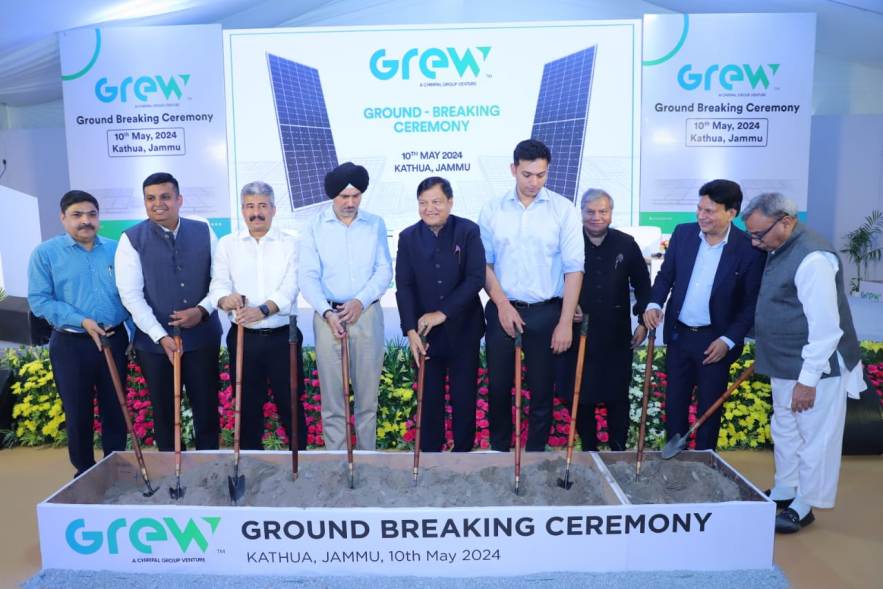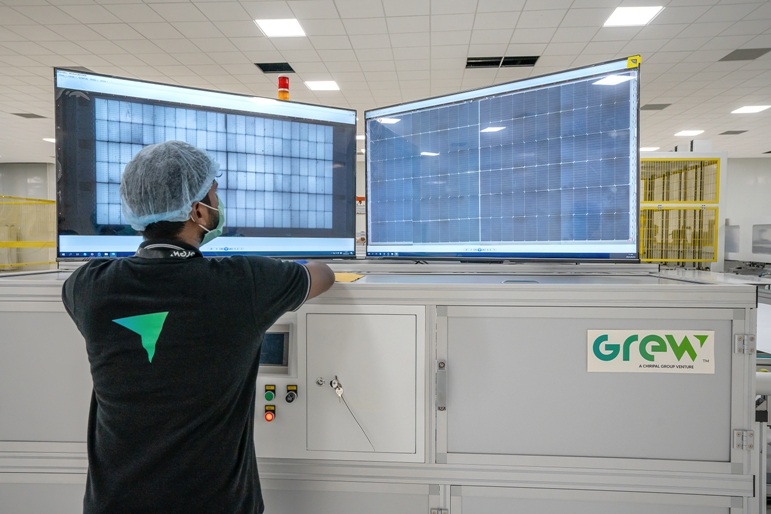Part of the Chiripal Group, Grew Energy, a producer of solar modules, recently announced a mega backward integration programme of setting up an ultra-modern facility in the UT of Jammu & Kashmir for producing ingots, wafers, cells and modules used in solar power systems. In this interview, we have Vinay Thadani, Director & CEO, Grew Energy, elaborating on the upcoming facility for which Grew Energy has committed an investment of Rs.4,500 crore. Thadani is confident that this upcoming unit will not only encourage socio-economic development of the UT of J&K but also contribute towards improving India’s self-reliance in the solar power equipment space.

Speaking of the backward integration, please discuss the mega facility in the UT of J&K, for which the ground-breaking was recently performed. What was the reason for selecting UT of J&K as the site location?
We are all set to establish a three-stage fully backward integrated manufacturing unit in Jammu & Kashmir for ingots, wafers, cells and modules used in solar systems.
Committed to invest Rs.4,500 crore, we are building this ultra-modern facility in Kathua, Jammu & Kashmir, which will have annual capacity of manufacturing 2.8 GW of ingots, wafers & cells and 3.6 GW of high-efficiency modules.
Grew will be one of the few companies in Indian solar industry to have a technologically advanced three-staged fully backward integrated manufacturing facility. This high-tech facility will be set up as per international standards with world-class automated machinery.
We anticipate huge demands for DCR (domestic content requirement) panels in the north owing to various announcements from the Centre on developing solar parks, large scale rooftop and brownfield projects in Ladakh and Uttar Pradesh, among other places. This was one major reason for us to move to Kathua. We also chose Jammu & Kashmir due to prompt response and support from Jammu & Kashmir Government.
What is the current status of the project with respect to land acquisition, orders for plant & machinery, etc.? Do you have a technical collaborator for the project?
On May 10, 2024, we organised a ground-breaking ceremony at Kathua in the presence of esteemed guests from the State Government. We have all the approvals and majority of formalities regarding land acquisitions among others are progressing in a timely manner. The continuous support of the Jammu & Kashmir government has enabled us to expedite our process and helped us focus all our resources on building the unit.

By when is the Kathua project likely to commission?
Considering the current speed of establishment process, we aim that our commercial operation date for Phase III of the Kathua unit to be April 2026, which is when maximum annual production capacity will be attained.
What was the rationale in undertaking this backward integration?
We are the youngest yet fastest growing solar company in India, and have set out on our journey to make India energy efficient through sustainable energy solutions and innovation. Driven by a firm dedication towards environmental sustainability and technological excellence, we have implemented our manufacturing plans by establishing our first module manufacturing plant in Rajasthan in October 2023, within two years of our establishment in 2022.
With an aim to make India Aatmanirbhar and a leader not only in solar installed capacity but also in manufacturing of PV modules and solar components, we decided to manufacture ingots, wafers and solar cells ourselves.
On completion, our Jammu unit, will be well-equipped with an annual capacity to manufacture 2.8 GW of ingots, wafers and cells, thus helping us to reduce import dependency.

Tell us about your solar module manufacturing plant in Rajasthan. Do you have any capacity expansion plan here?
In October 2023, we started operations at our 1.2 GW module manufacturing unit at Jaipur, Rajasthan, and will soon extend this to 2.8GW with an additional 1.6GW module manufacturing capacity coming up at the same location.
How do you rate India’s current overall self-reliance on solar cells? Given that India has a significant ambition of 500 GW of non-fossil fuel capacity by 2030, largely driven by solar, how do you see India’s dependence on imported solar cells?
Currently, India solar manufacturers are largely dependent on imports to produce modules, etc. in the country but we are witnessing a major change in this scenario.
With the insistence of Central Government on using DCR modules and other initiatives like Make-in-India and Aatmanirbhar Bharat, Indian manufacturers are motivated to locally manufacture modules as well as other components like ingots, wafers, cells, EVA sheets, tampered glass, back sheets/glass, junction boxes, etc.
This is vital if we have to achieve the targets set for 2030 and become a global leader in manufacturing as well as installed capacity of renewable energy. In the coming years, we will have more and more Indian manufacturers other than us, which will reduce dependence on imports considerably.


